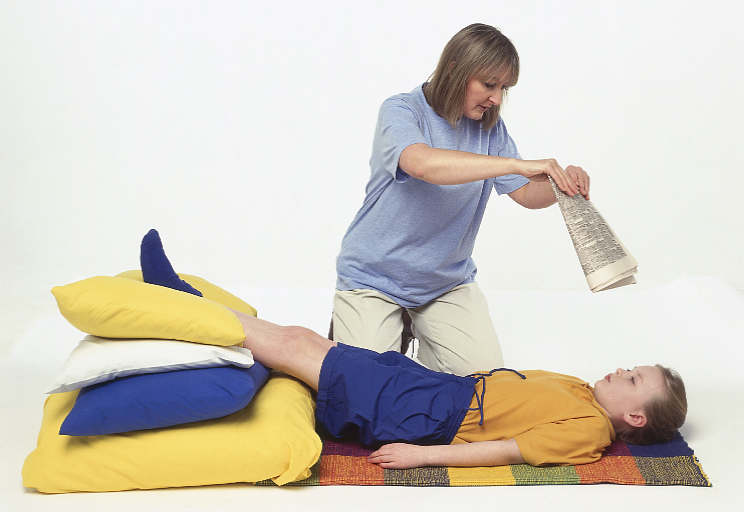|
Fainting
 Fainting should be
considered a medical emergency unless you know the cause. Fainting should be
considered a medical emergency unless you know the cause.
If possible, help the person who has
fainted to the ground to minimize injury. Be careful not to injure your back
when doing so. The person should lie flat on their back. Elevate the legs to
help restore the person's blood pressure.
Stimulate the person vigorously (yelling,
briskly tapping) taking care not to cause injury. Call 911 immediately if the
person does not respond.
Check for the pulse in the neck and begin
CPR, if needed.
After the person recovers, encourage him
or her to lie down until medical help arrives. Even if you believe the cause of
the fainting is harmless, have the person lie down for 15-20 minutes before
attempting to get up again.
Ask about any persistent symptoms, such as
headache, back pain, chest pain, shortness of breath, abdominal pain , weakness,
or loss of function, because these may indicate a life-threatening cause of the
fainting.
Medical Treatment for Fainting
The treatment of fainting depends on the
diagnosis.
Vasovagal syncope (Situational)
- Examples of vasovagal
syncope include fainting in scary or embarrassing situations or during blood
drawing, coughing, or urinating.
- Lifestyle
alterations: Drink plenty of water, increase salt intake (under medical
supervision), and avoid prolonged standing.
- Medications:
Medication may be prescribed if episodes are frequent.
Postural syncope (Changing body
position)
- Lifestyle
alterations: Sit up and flex calf muscles for a few minutes before getting out
of bed. Avoid dehydration. Elderly people with low blood pressure after
eating should avoid large meals or plan to lie down for a few hours after
eating.
- Medications: In most
cases, drugs that cause fainting are withdrawn or changed.
Cardiac syncope
- Medication and
lifestyle alterations: These treatments are designed to optimize the heart's
performance while limiting its demands. Controlling high blood pressure, for
example, would call for a medication and lifestyle change. In some cases,
specific anti-arrhythmic drugs may be prescribed.
- Surgery: Bypass
surgery or angioplasty is used to treat coronary heart disease. For some
valve problems, valves can be replaced. Catheter ablation is available to
treat some arrhythmias.
- Pacemaker: A
pacemaker may be implanted to slow the heart in certain types of fast
arrhythmias.
- Implanted
defibrillators are used to control life-threatening fast arrhythmias.
Neurological Syncope
- Seizures: If these
are recurrent, medications will be used.
- Stroke or transient
ischemic attacks: A full evaluation will be performed to detect any
significant blockages in the arteries to the brain. Surgery and medications
may be needed depending on the findings.
Other Causes of Syncope
- There are many other
causes of syncope including low blood sugar levels and lung disease such as
emphysema and a pulmonary embolus.
- Your doctor will do a
complete history, physical, and various diagnostic tests to identify the cause
of fainting.
- Depending on the
cause, appropriate therapy will be instituted.
-
First Aid Case List -
back to top - |